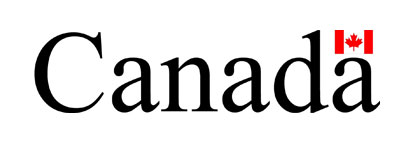
As a small business owner, one of the essential responsibilities you’ll face is navigating the intricate world of taxes. From understanding various tax obligations to maximizing deductions, managing your business’s tax affairs can feel overwhelming. However, gaining knowledge and adopting effective strategies ensures that tax season becomes a smoother and more rewarding experience. In this blog, we’ll explore critical insights and practical tips to help you navigate the complexities of taxes, empowering you to make informed decisions and optimize your financial outcomes as a small business owner. Let’s dive in and discover the path to successful tax management for your venture.
Identifying your business structure
First, you must decide what business structure will best set you up for success. Whether you choose a sole proprietorship, a partnership, or a corporation, you must plan around the tax brackets. The first tax bracket (federal) caps at about $53,000 (2023 tax year), and the second tax bracket caps at roughly $106,000. To pay the lowest percentage of your income in taxes, you should aim to stay within the first tax bracket of $53,000 taxable income; however, if that is too little for your situation, aim to stay under the $106,000 limit.
- In a sole proprietorship, you claim the total net profit and land wherever you land tax-wise and can only mitigate your tax payable through RRSPs and similar factors.
- In a partnership, you can split the net profit between you and your partner/spouse to hopefully leave you both in a lower tax bracket and reduce your combined tax payable.
- In a corporation, you can choose how much to take out as a wage or dividend (there are benefits to each), and you have complete flexibility and control.
There are, of course, pros and cons for each structure, but a few points we’d like to highlight are:
- If you earn under $53,000, a sole proprietorship or partnership would work well for you.
- If your income is over $53,000 and you have a spouse who helps with the company, you may want to split the business income in a partnership to keep you both below or near $53,000.
- If you make more than you need and would like to bring your income down to $53,000, you may want to incorporate to control your taxable income better, though keep in mind, the corporation pays tax on the income it receives as it is a separate entity, even so, it is likely to save you money.
You can switch the type of business structure as needed, though you shouldn’t change it frequently as that may make you a target of an audit. If you are approaching the point of incorporation, remember that it takes up to three months, so allow that time in your planning. As your business grows and your taxable income approaches the top of the first tax bracket, you can incorporate it to save money. Beware of higher tax brackets and avoid them if possible.
When to register for GST
You may need to set up a GST account once you decide on the business structure that best suits your tax situation. You can choose whether to register for GST if your business income is below $30,000. If your income is over $30,000, you must register for GST. Like a farmer, you should voluntarily register for GST before the $30,000 mark only when you are GST-exempt. Unless you are GST-exempt, you will always be paying extra taxes in GST, so you should avoid registering too early. Anyone who is GST exempt should register for GST ASAP to start getting GST refunds. If you want to know more, you can see the rules on GST here.
What you can claim as a business expense
The biggest tool in your toolbox for paying less taxes is knowing what you can claim as a business expense. Many people don’t know what to claim or feel uncomfortable claiming too much. Whatever you need for your business, you can claim within reason. Here is where a bit of creativity comes into play. Does listening to Sirius Radio increase your focus on long drives for your business? Claim it. Do you do deliveries and pay for BCAA? Claim it. Do you have a little poodle on your farm? Claim it as a security expense (little dogs bark quite a bit, so it’s an excellent alarm system, even if it isn’t physically imposing). If you work from home, you can claim a percentage of many expenses, some of which are listed here, but don’t claim the new fridge for your kitchen. Or your basement remodel. Or maybe your new sofa (unless you have business meetings in your living room). Claiming office furniture, such as a new chair or desk, is fine, but not things unrelated to you working at home. Pushing too hard in this direction may cause trouble in an audit. In extreme cases, the CRA may try to remove your Principal Residence Exemption if you claim too many capital improvements of your home as business expenses. Be creative, thinking of all applicable business expenses but not your home expenses.
Keeping yourself and your wallet healthy
One little-known benefit available to entrepreneurs is a Health Spending Account (HSA). Typically, very little of your medical expenses are tax deductible (it’s complicated), but HSAs are fully deductible as a business expense. So, instead of a small tax credit on medical costs (or nothing back, depending on how much you spend/earn), you can have better medical coverage that is fully covered by your business and claimed as a business expense. This could be a game changer for small businesses, saving you money (depending on your situation) and attracting better employees with better benefits. You can see more details on HSAs here.
Filing your taxes
Now, when it comes to filing your taxes, there are two things you should know. First, most tax filers don’t ask questions, simply accepting what you give them as the whole truth, so either find someone who cares enough to search out any possible missed tax deductions or maybe start filing your taxes yourself. The second thing you should know is that filing taxes isn’t nearly as difficult as most people think. Why spend hundreds (or thousands) of dollars every year to do what you can do yourself in a few hours? If you have good bookkeeping, moving the numbers to the tax forms isn’t all that difficult and shouldn’t take more than an hour or two in most situations. The CRA has a list of certified tax software that allows you to file online for free or practically free. These programs are user-friendly and assist you in claiming all applicable taxes. If your business is incorporated, you will need to hire someone to do your taxes for you, but until then, you may want to spend the time to save yourself some money.
Below are a few additional tax tips and considerations:
- Changing assets too often can cost you. When you sell an asset that has been depreciated, you may incur “recapture,” which is especially true for some assets, such as vehicles that depreciate quickly and people who sometimes change too frequently. If you plan to change vehicles every five years or less, consider leasing them.
- Timing is everything. Buying an asset on the last day of your fiscal year is the same as buying it on the first day, so time it as close to the end of your year as possible for a slight benefit.
- Avoid big income bumps in a single year (unless incorporated). If you have a significant income coming in, spread it over two or three years if possible. Changing one large payment in your last fiscal month to two payments over two months can make a big difference.
- Plan ahead. Knowing what is on the horizon will help you better prepare for the tax repercussions, especially if you sell or close your business.
Of course, don’t forget to claim all possible personal tax benefits. You can find a complete list here. It’s an extensive list, so you may want to pay particular attention to a few familiar (but often unknown) ones: 20800, 21400, 21900, 22100, 31270, 31285, 32300, and 32400.
In conclusion, navigating taxes as a small business owner may seem daunting, but with the proper knowledge and strategies, you can confidently tackle this vital aspect of your business. By understanding your tax obligations, organizing your financial records, seeking professional guidance when needed, and staying proactive throughout the year, you can maximize deductions, minimize liabilities, and optimize your financial outcomes.
Remember, staying informed and adapting to tax laws and regulations changes are crucial. With the insights and practical tips shared in this blog, you’re now equipped to navigate the complexities of taxes successfully. If you want additional business resources, check out myCommunityFutures workshops and our Resources.







